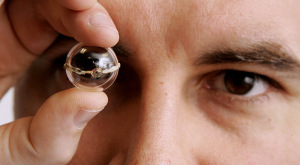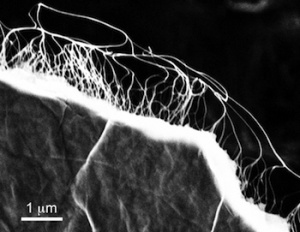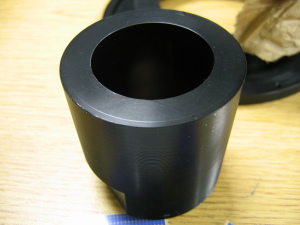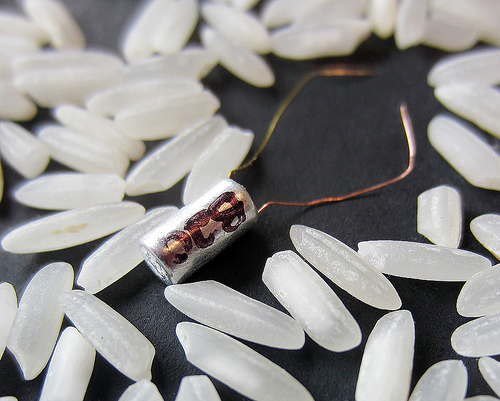On Thursday, Dec. 31, 2015, the bear ate me (borrowed from Joan Armatrading’s song “Eating the bear”) or, if you prefer this phrase, I had a meltdown when I lost more than 1/2 of a post that I’d worked on for hours.
There’s been a problem dogging me for some months. I will write up something and save it as a draft only to find that most of the text has been replaced by a single URL repeated several times. I have not been able to source the problem which is intermittent. (sigh)
Moving on to happier thoughts, it’s a new year. Happy 2016!
As a way of swinging into the new year, here’s a brief wrap up for 2015.
International colleagues
As always, I thank my international colleagues David Bruggeman (Pasco Phronesis blog), Dexter Johnson (Nanoclast blog on the IEEE [International Electrical and Electronics Engineers website]), and Dr. Andrew Maynard (2020 science blog and Risk Innovation Laboratory at Arizona State University), all of whom have been blogging as long or longer than I have (FYI, FrogHeart began in April/May 2008). More importantly, they have been wonderful sources of information and inspiration.
In particular, David, thank you for keeping me up to date on the Canadian and international science policy situations. Also, darn you for scooping me on the Canadian science policy scene, on more than one occasion.
Dexter, thank you for all those tidbits about the science and the business of nanotechnology that you tuck into your curated blog. There’s always a revelation or two to be found in your writings.
Andrew, congratulations on your move to Arizona State University (from the University of Michigan Risk Science Center) where you are founding their Risk Innovation Lab.
While Andrew’s blog has become more focused on the topic of risk, Andrew continues to write about nanotechnology by extending the topic to emerging technologies.
In fact, I have a Dec. 3, 2015 post featuring a recent Nature article by Andrew on the occasion of the upcoming 2016 World Economic Forum in Davos. In it he discusses new approaches to risk as occasioned by the rise of emerging technologies such synthetic biology, nanotechnology, and more.
While Tim Harper, serial entrepreneur and scientist, is not actively blogging about nanotechnology these days, his writings do pop up in various places, notably on the Azonano website where he is listed as an expert, which he most assuredly is. His focus these days is in establishing graphene-based startups.
Moving on to another somewhat related topic. While no one else seems to be writing about nanotechnology as extensively as I do, there are many, many Canadian science bloggers.
Canadian colleagues
Thank you to Gregor Wolbring, ur Canadian science blogger and professor at the University of Calgary. His writing about human enhancement has become increasingly timely as we continue to introduce electronics onto and into our bodies. While he writes regularly, I don’t believe he’s blogging regularly. However, you can find out more about Gregor and his work at http://www.crds.org/research/faculty/Gregor_Wolbring2.shtml
or on his facebook page
https://www.facebook.com/GregorWolbring
Science Borealis (scroll down to get to the feeds), a Canadian science blog aggregator, is my main source of information on the Canadian scene. Thank you for my second Editors Pick award. In 2014 the award was in the Science in Society category and in 2015 it’s in the Engineering & Tech category (last item on the list).
While I haven’t yet heard about the results of Paige Jarreau’s and Science Borealis’ joint survey on the Canadian science blog readers (the reader doesn’t have to be Canadian but the science blog has to be), I was delighted to be asked and to participate. My Dec. 14, 2015 posting listed preliminary results,
They have compiled some preliminary results:
- 21 bloggers + Science Borealis hosted the survey.
- 523 respondents began the survey.
- 338 respondents entered their email addresses to win a prize
- 63% of 400 Respondents are not science bloggers
- 56% of 402 Respondents describe themselves as scientists
- 76% of 431 Respondents were not familiar with Science Borealis before taking the survey
- 85% of 403 Respondents often, very often or always seek out science information online.
- 59% of 402 Respondents rarely or never seek science content that is specifically Canadian
- Of 400 Respondents, locations were: 35% Canada, 35% US, 30% Other.
And most of all, a heartfelt thank you to all who read this blog.
FrogHeart and 2015
There won’t be any statistics from the software packaged with my hosting service (AWSTATS and Webalizer). Google and its efforts to minimize spam (or so it claims) had a devastating effect on my visit numbers. As I used those numbers as motivation, fantasizing that my readership was increasing, I had to find other means for motivation and am not quite sure how I did it but I upped publication to three posts per day (five-day week) throughout most of the year.
With 260 working days (roughly) in a year that would have meant a total of 780 posts. I’ve rounded that down to 700 posts to allow for days off and days where I didn’t manage three.
In 2015 I logged my 4000th post and substantially contributed to the Science Borealis 2015 output. In the editors’ Dec. 20, 2015 post,
… Science Borealis now boasts a membership of 122 blogs — about a dozen up from last year. Together, this year, our members have posted over 4,400 posts, with two weeks still to go….
At a rough guess, I’d estimate that FrogHeart was responsible for 15% of the Science Borealis output and 121 bloggers were responsible for the other 85%.
That’s enough for 2015.
FrogHeart and 2016
Bluntly, I do not know anything other than a change of some sort is likely.
Hopefully, I will be doing more art/science projects (my last one was ‘A digital poetry of gold nanoparticles’). I was awarded a small grant ($400 CAD) from the Canadian Academy of Independent Scholars (thank you!) for a spoken word project to be accomplished later this year.
As for this blog, I hope to continue.
In closing, I think it’s only fair to share Joan Armatrading’s song, ‘Eating the bear’. May we all do so in 2016,
Bonne Année!



